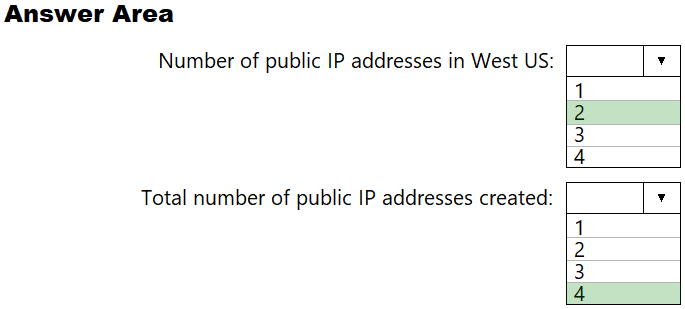HOTSPOT -
You have an Azure subscription that contains the resource groups shown in the following table.

You create an Azure Resource Manager template named Template1 as shown in the following exhibit.

From the Azure portal, you deploy Template1 four times by using the settings shown in the following table.

What is the result of the deployment? To answer, select the appropriate options in the answer area.
NOTE: Each correct selection is worth one point.
Hot Area:








